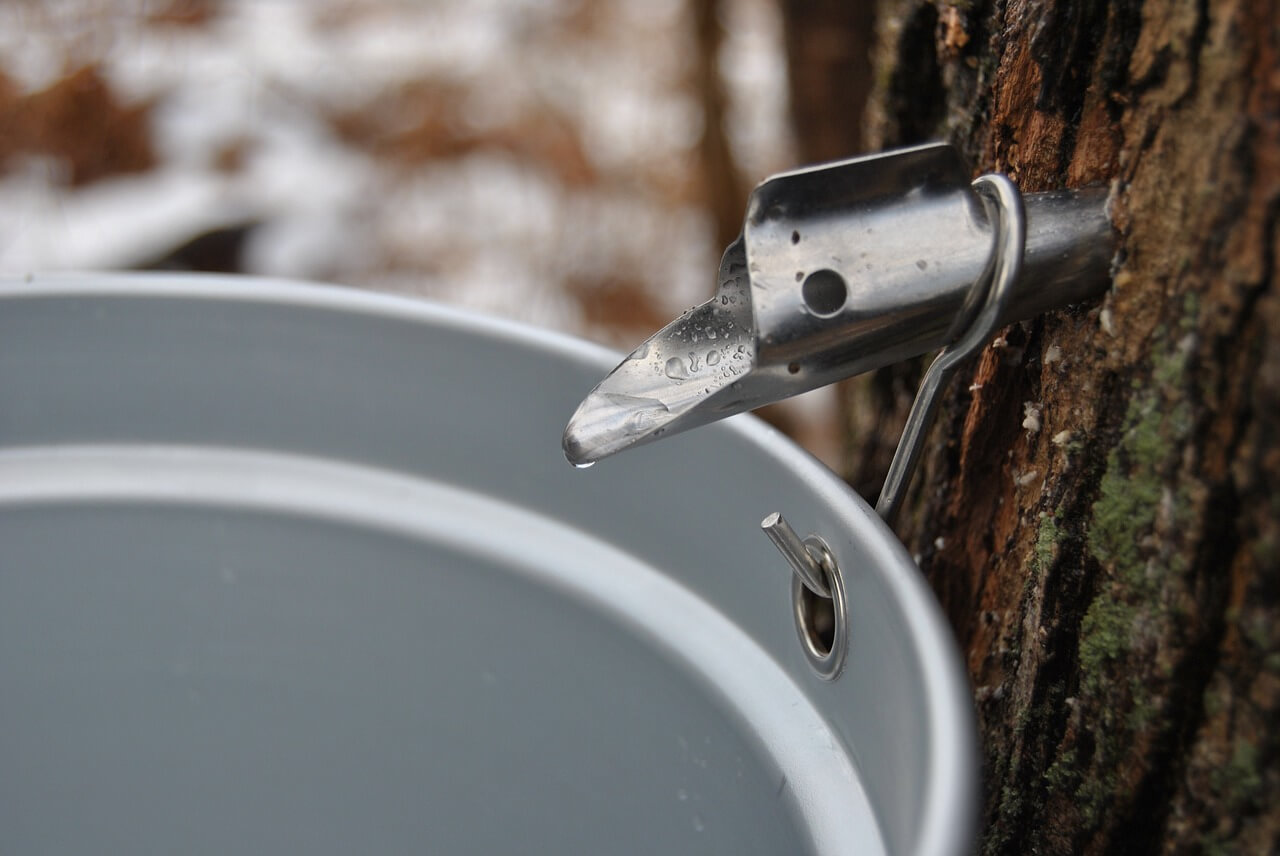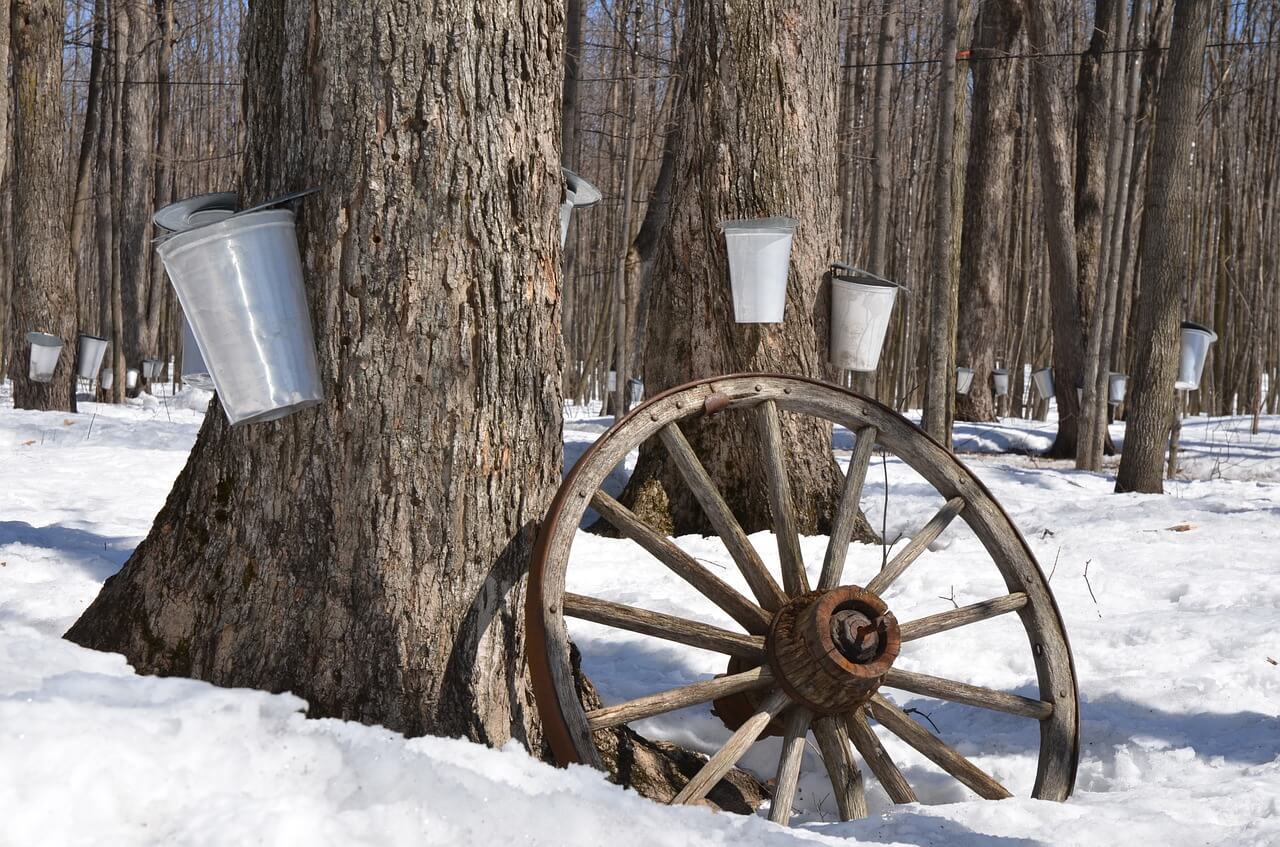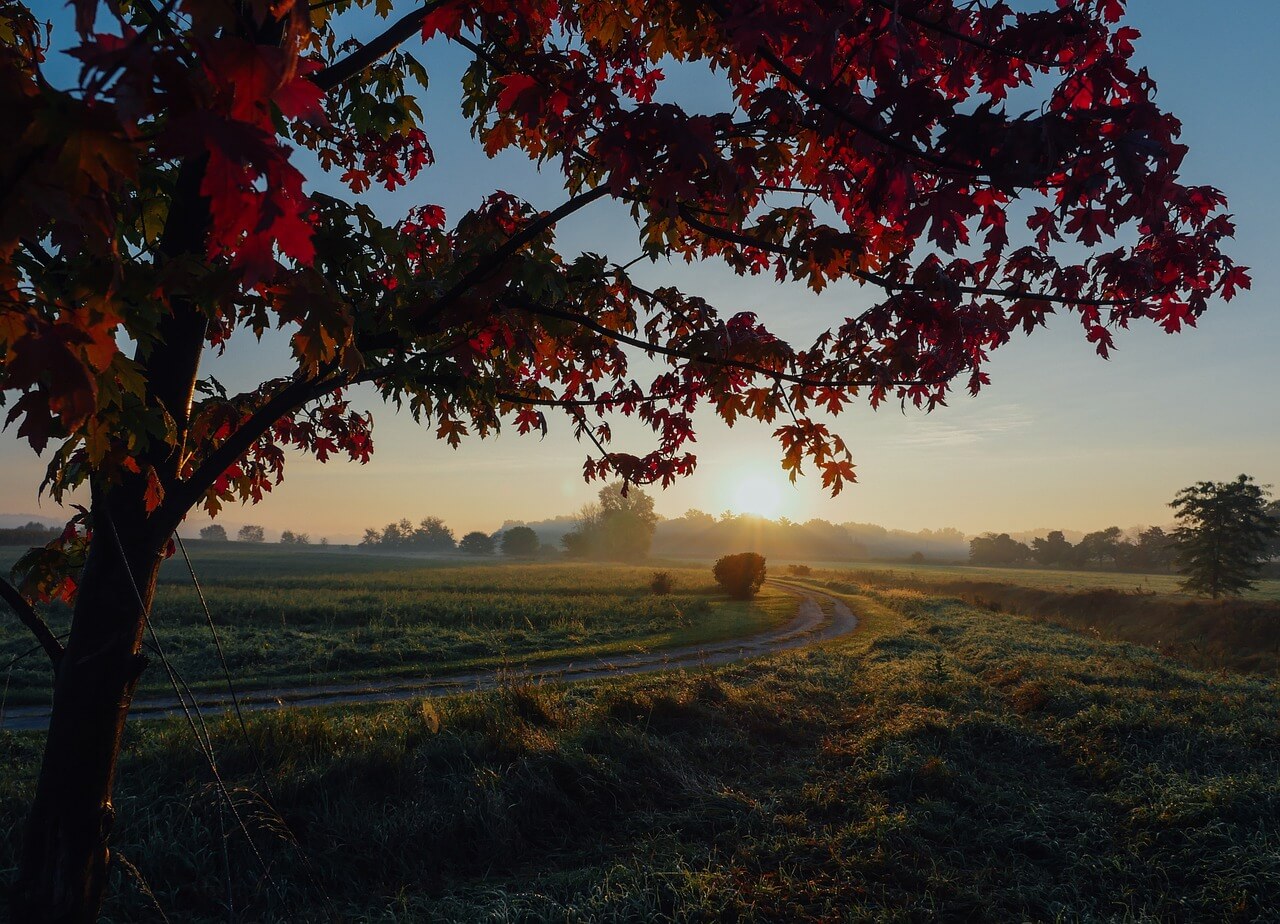Ever thought of making maple syrup at home? You may think it’s impossible to collect enough sap to make it worth your while, but you’d be surprised at just how much sap will come out of each tree! In this article, we’ll discuss everything you need to know about how to tap a maple tree for syrup.
What You'll Learn Today
Can You Tap Any Maple Tree for Syrup?

Any variety of maple tree will produce the sap needed for making syrup. That said, some species have a lower sugar content than others, meaning you may have to boil the sap longer and will end up with a smaller amount of syrup.
According to the Department of Natural Resources, some popular varieties for making syrup are sugar, black, and red maples. These trees produce sap with a sugar content of around 2 percent or higher.
Of all maple tree varieties, the sugar maple is most often used for making syrup. As its name suggests, this species has the highest amount of sugar in its sap, sometimes as much as 5 percent.
Each species of maple tree will produce a slightly different syrup, with variations in color and flavor.
Are There any Legal Considerations for Tapping Maple Trees?
If you live within city limits, it’s best to stick to tapping trees on your own property or, with permission, a friend or relative’s property. You should never tap trees on public property unless you have permission to do so.
Some towns and cities may have ordinances regarding maple tapping, so it’s best to check into your specific local laws before getting started. In most states, it is illegal to tap trees on state owned public property such as wildlife conservation areas.
If you live outside of city limits, chances are there won’t be any legal considerations unless you’re caught tapping trees on someone else’s property without permission. Just use good judgment, and double check any local laws that may apply if you’re unsure about where and how to tap maple trees.
How Big Does a Maple Tree Have to Be to Tap It?
It’s important that you choose only mature trees for tapping. Younger trees will not produce as much sap and may be damaged or killed during the process.
As a rule of thumb, you shouldn’t tap any tree that is less than 12 inches in diameter. Generally, the larger the tree, the more sap you’ll be able to get from it.
Also, make sure the trees you select are healthy, free from signs of disease or rot. Ideally, they should be located in areas that receive plenty of water and sunlight.
Which Side of a Maple Tree Do You Tap?

You may be surprised to learn that sap doesn’t flow evenly through trees. It tends to flow more readily on the side of the tree that receives the most sunlight.
For this reason, the south side of the tree is ideal for placing your first tap. If you plan to place multiple taps in a large tree, then the east and west sides are also good options.
The north side receives the least amount of sunlight, so in most cases you won’t be placing any taps on that side of the tree.
How Much Sap Can You Get from Each Tree?
The amount of sap you get varies from day to day.
On warm, sunny days, you may get as much as three or four gallons from a large, healthy tree. Cold, cloudy days may result in a quart of sap or less.
Can You Kill a Maple Tree By Tapping It?
If you’re new to tapping maple trees for syrup, you may be concerned about harming the trees in the process.
Though it is possible to damage and even kill trees through improper tapping methods, you can greatly reduce any risk to your trees by following a few basic safety tips.
- Only tap mature, healthy trees larger than 12 inches in diameter.
- Use an appropriate number of taps based on the size of the tree:
- 12 to 20 inches: 1 tap
- 21 to 27 inches: 2 taps
- 28 inches and up: 2 or 3 taps
- Do not plug holes after removing the taps.
- Drill new tap holes 6 inches above and 4 inches to the side of the old tap holes.
- Understand the correct method for tapping maple trees.
So, what is the correct method? Let’s take a closer look.
What is the Best Way to Tap Maple Trees?
First off, you may want to get a visual on the process by checking out a good tutorial video. The video above does a great job of showing each step along the way, from first tapping your trees to completing a batch of maple syrup.
Once you’re ready to start, you’ll need to select which trees you’re going to tap and gather the necessary supplies. You’ll need:
- Taps – at least one for each tree
- Sap collection buckets – one for each tap
- Drill and drill bit for drilling holes – either 5/16- or 7/16-inch, depending on the size of your taps
Knowing when to tap is a bit of a trick, and it may take you a few years to really get the hang of it. Maple tapping is usually done in late winter, when daytime temperatures are consistently about 5 to 10 degrees above freezing.
- When the weather is right, drill holes for the taps. They should be at a convenient height and should slant slightly upward into the wood.
- Remove any wood shavings from the holes, then use a hammer to gently pound the taps into the holes. They should fit securely, but be careful not to break the taps by hammering too hard or too deep.
- Hang the buckets underneath the taps, then wait for the sap to begin flowing.
- Throughout the process, collect the sap fresh every day. You will get more sap on warmer days and less on colder days.
You can store the sap in food-safe containers for a few days, until you have enough to boil down into syrup. It should be stored at cool or cold temperatures, ideally 38 degrees Fahrenheit or less.
The sap will begin to go bad after three or four days even when properly stored. To avoid wasting sap, it’s best to boil down whatever you have every couple of days.
How Long Can You Leave a Tap in a Maple Tree?
Remove your taps once the sap has stopped flowing – usually about 4 to 6 weeks after putting them in.
Remember, there’s no need to patch the holes after you remove the taps. Doing so can interfere with the tree’s natural self-healing processes.
How Deep Should You Tap a Maple Tree?
Standard taps will go about 2 to 2 ½ inches into the tree. Some taps are made specifically with the health of the tree in mind and will only go about 1 ½ inches in.
Regardless of the length of the taps you use, make sure you drill holes of roughly the same depth. It’s better to drill the holes a bit shallow than to drill them too deep.
Once your holes are in place, you can then secure the taps by carefully hammering them in, as discussed above.
How Do You Make Syrup from Maple Sap?

When it comes time to process the sap into syrup, you’ll need a few additional items:
- A large pot
- A smaller pot
- Stirring utensils
- An outdoor propane burner or evaporator
- Cheesecloth or fine mesh strainer
- Mason jars or similar containers
In most cases, it’s best to boil the sap down outside. The process continues for several hours and releases so much humidity that it can cause moisture damage if you do it inside your house.
- Once you have your outdoor heat source set up, pour the sap into a large pot. The pot should be about three-fourths full to start.
- Bring the sap to a boil, and try to maintain a boiling temperature between 212 and 218 degrees Fahrenheit. As the liquid cooks down, you can add more sap a little at a time as long as it continues to boil.
- Eventually, the clear sap will thicken and darken into a more caramelized color. At this point, you can transfer it to a smaller pot and finish cooking it inside.
- Keep an eye on the syrup as it continues to thicken and darken. It will burn easily at this stage.
Maintain a low boil, stirring occasionally, and closely monitoring the temperature with a candy thermometer.
- When the syrup reaches a temperature of 219 to 220 degrees Fahrenheit, it is done. Remove it from the heat and let it cool briefly.
- Strain the syrup through cheesecloth or some other fine filter to remove any small particles. The boiling process often produces small, hard bits of “sugar sand” in the syrup.
- At this point, pour the strained syrup into sterilized containers and allow it to cool completely.
Congratulations – you just made your own maple syrup!
Conclusion
Tapping maple trees and making syrup at home can be a time-consuming process, but it is definitely worth the effort. You’ll find that homemade maple syrup tastes twice as sweet knowing that you made it yourself!
Do you want to protect your maple trees from squirrels? Here is how.
This guide is so cool. I grew up in North Carolina and we often tap maples for their sap to boil down into syrup.